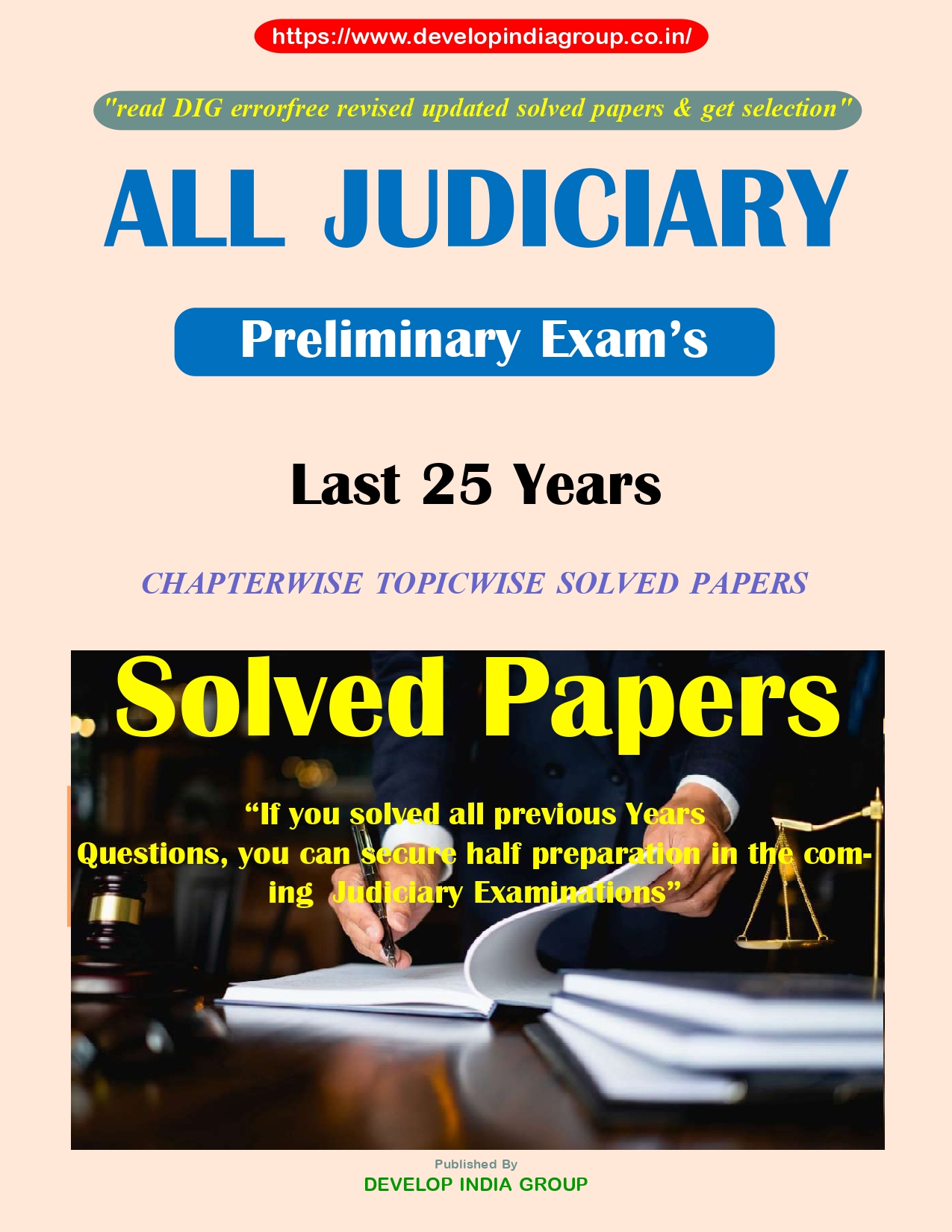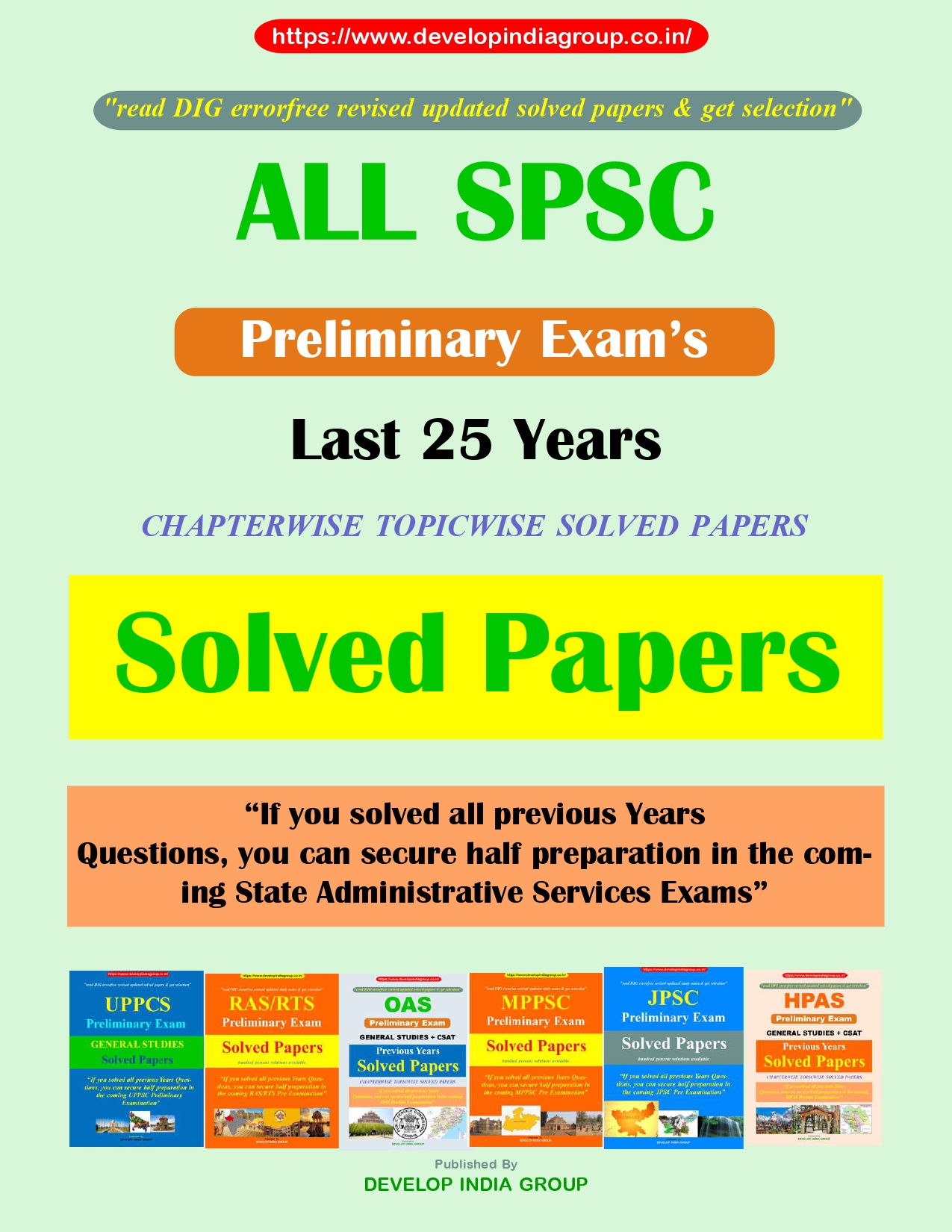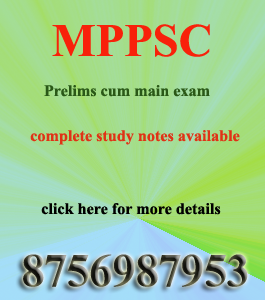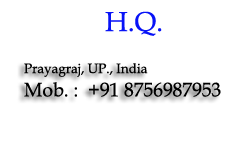

| Online Video Lectures Courses |
|---|
![]() Online Video Lectures Classes for Administrative Services Exams
Online Video Lectures Classes for Administrative Services Exams
![]() Online Video Lectures Classes
for Judicial Services Exams
Online Video Lectures Classes
for Judicial Services Exams
![]() Online Video Lectures Classes for IIT JEE Exam
Online Video Lectures Classes for IIT JEE Exam
![]() Online Video Lectures Classes for NEET Exam
Online Video Lectures Classes for NEET Exam
| BUY Online Study Materials/Notes |
|---|
| Quick Links |
|---|
HPAS Prelims Exam Syllabus
Paper-I :
General
Studies
(Code No.01)
History, geography, political, art & culture and socio economic development of Himachal Pradesh.
Currents events of national and international importance.
History of India and Indian national movement.
Indian and World Geography-physical, social, economic geography of India and the world.
Indian polity and governance –Constitution, political system, Panchayati Raj, Public Policy, Rights issues, etc.
Economic and social development – sustainable
development poverty, inclusion, demographics, social sector
initiatives, etc.
General issues on environmental ecology, bio-diversity and climate Change – that do not require subject specialization
General science.
Paper - II :
Aptitude Test
(Code No.02)
Comprehension
Interpersonal skills including communication skills
Logical reasoning and analytical ability
Decision making and problem solving
General mental ability
Basic numeracy (numbers and their relations, orders of
magnitude etc. (Class X level), Data interpretation (charts,
graphs, tables, data sufficiency etc. – Class X level).
English Language comprehension skills (Class X level)
This preliminary examination will consist of two objective type papers (multiple choice
questions) and carry a maximum of 400 marks. The number of candidates to be
admitted to the Main Examination will be about 20 times the total approximate
number of vacancies to be filled in the year in the Posts / Service. Only those
candidates who have been declared to have qualified the preliminary examination by
the H.P. Public Service Commission in a year will be eligible for admission to the main examination of that year provided they are otherwise eligible for admission to the Main
Examination.
Note: There will be penalty (Negative Marking) for wrong answers marked by a
candidate in the objective type question papers.
(i) There are four alternatives for the answers to every question. For each question for which a wrong answer has been given by the candidate, one third of the marks assigned to that question will be deducted as penalty.
(ii) If a candidate gives more than one answer, it will be treated as a wrong answer even if one of the given answers happen to be correct and there will be same penalty as above for that question.
(iii) If a question is left blank i.e. no answer is given by the candidate, there will be no penalty for that question.
(D) The duration of Papers No.I and II (General Studies and Aptitude Test) will be two
hours each.”
Main (Written) Examination Revised Pattern
Main Written Examination
The candidate shall specify in his/her application form the optional subject he/she desire to take. He /She may intimate any change of his/her intention to the Secretary, Himachal Pradesh Public Service Commission not later than the last date prescribed for the receipt of Application. A candidate shall answer the Optional Paper in English or in Hindi as per his/her option.
The compulsory and optional subjects and maximum marks fixed for each Subject shall be as shown in the statement below:-
Compulsory Subjects
English 100
Hindi 100
Essay 100
General Studies – I 200
General Studies – II 200
General Studies – II 200
Optional Subject (One)
Paper I 100
Paper II 100
Viva-Voce
Viva-Voce 150 Marks
The candidate will be interviewed by the Commission who will have before them a record of his/her career. He / She will be asked questions on matters of general interest. The object of the interview is to assess the personal suitability of the candidate for the services or service for which he / she has applied to the Commission.
The test is intended to judge the mental calibre of candidate. In broad terms, this is really an assessment of not only his / her intellectual qualities but also social traits and his / her interest in current affairs including the knowledge of customs, manners and dialects of Himachal Pradesh. Some of the qualities to be judged are mental alertness, critical powers of
assimilation, care and logical exposition, balance of judgements, variety and depth of interest, ability for social cohesion and leadership, intellectual and moral integrity”.
HPAS Main Exam Syllabus in details
COMPULSORY PAPERS
PAPER–I: ENGLISH (100 MARKS)
Objectives:
This paper is designed to test candidate’s knowledge/aptitude in the following:—
1. Comprehension of English Language
2. Correct grammatical expression
3. Clarity and precision in expression
Areas of Testing:
Candidates will be tested in the following areas:
1. English Grammar - (20 Marks)
2. Usage and vocabulary - (20 Marks)
3. English Composition Letter / Application / Report / Note writing - (20 Marks)
4. Comprehension of unseen passages - (20 Marks)
5. Precis Writing - (20 Marks)
Evaluation / Marking:
Credit will be given for the following:-
1. Writing of précis, comprehension, composition and usage according to requirements of format.
2. Coherence and sequence in expression.
3. Correctness of grammatical structures.
4. Originality of thought and expression.
PAPER-II: HINDI IN DEVNAGRI SCRIPT (100 MARKS)
(i) Translation of an English passage into Hindi.
(ii) Translation of Hindi passage into English.
(iii) Explanation of Hindi passage in Prose and Poetry in the same language.
(iv) Composition (Idioms, corrections etc.)
PAPER-III: ESSAY (100 MARKS)
Objective:
This paper is designed to test candidate’s (i) knowledge / awareness of a variety of subjects and (ii) their ability to compose a sustained piece of writing in the form of an essay.
Contents:
A fair choice of topics covering (i) current affairs (ii) socio- political issues (iii) socioeconomic issues (iv) aspects of culture and history and (v) reflective topics will be given to test
the candidates’ understanding of these issues and their flair for expressing themselves in the
English or in Hindi language. The candidates are required to attempt 2 Essays, choosing one each
from Section A and B in about 900 words each.
Areas of Testing:
This paper would test the following:
1. Ability to compose a well-argued piece of writing
2. Ability to express coherently and sequentially
3. Awareness of the subject chosen
Evaluation / Marking:
Credit will be given for the following:
1. Observing established rules and format for essay writing
2. Grammatical correctness of expression
3. Originality of thought and expression
GENERAL STUDIES PAPER - I
Marks: 200
UNIT—I
Sub-Unit 1
- Historical perspective of Indian Cultural heritage:
- Literature and Art forms from ancient times to 1947 (Major structural and rock cut temple architecture, sculptural art and major schools of paintings).
- Modern Indian history from mid-18th century to 1980.
- Freedom Struggle: its various stages and the role of eminent personalities from different parts of India.
Sub-Unit 2
- Industrial Revolution and the emergence of Capitalism.
- Fascist Ideology and its global implications.
- World wars and boundary settlements after the First and the Second World Wars.
- Concept of Decolonization, Nationalism and Socialism, Globalization and concept of Modernity.
Sub-Unit 3
- Emergence and growth of early medieval states: Kangra, Kullu and Chamba.
- Hill States and their relations with the Mughals and the Sikhs.
- Gorkha invasion- its nature and consequences, Treaty of Segauli.
- Hill States under the Colonial power: Political and Administrative History.
- Grants, Sanads and territorial aggression.
- Social and Economic conditions under colonial period with special reference to social practices of Beth, Begar and Reet.
- Establishment of British Cantonments.
- National Movement with special reference to Praja Mandal movements in Himachal Pradesh, 1848-1948.
- Five Year Plans and vision for the developed Hill State.
- Survey of artistic and cultural Heritage (Temples, Budhist Monasteries and Paintings).
UNIT – II
Sub-Unit 1
- Introduction to Disasters: Concepts ,definitions ,disaster classifications including natural and man- made disasters .
- Social and Environmental impacts of disasters.
- Disaster profile of the country.
- Approaches to Disaster Risk Reductions.
- Disaster management models. Roles and responsibilities of stakeholders including community, Concept of first responders.
- Interrelationship of disaster and development.
- Disaster management in India including DM ACT 2005, National and state policies, Plans and institutional mechanism in the country.
Sub-Unit 2
- Geographical Introduction to India, India as a unit of Geographical Study.
- Aspects of the Physical Geography of India – Structure and Relief, Climate, Soils and Vegetation, Geomorphic set up (Mountain Ranges and Rivers and other Water Bodies).
- Human Aspects – Population distribution, Urban Population, Internal Migration, Language and Literacy, Villages and Towns in India.
- Settlements, Industry and Transport.
Sub-Unit 3
- Geography of Himachal Pradesh: Relief, Drainage, Vegetation cover and types.
- Climate and climatic zones in Himachal Pradesh.
- Geographical Regions of Himachal Pradesh (Shiwalik, Doons and Low Valleys, Outer Valleys of Sub Himalaya, Mid Hill Tracts of High Himalaya, High hills and Valleys and Inner Zones).
- Human Aspects: Quantitative, Qualitative and Temporal characteristics of Population,Urbanization pattern.
- Policies: Forest, Industrial and Tourism Policies, Growth of Industrial areas and types of Industries in Himachal, Employment generation and potential, Scope of future Industrialization, Hazard Vulnerability and Risk Profile of Himachal Pradesh.
UNIT – III
Sub-Unit 1
- Salient features of Indian Society, Unity in Diversity.
- Social Institutions: Family, Marriage, Kinship, Religion and Social stratification in India.
- Women empowerment and social justice: Policies for women Empowerment in India, Laws for protection of women, women security and safety initiatives in India.
- Child Rights and Right to Education.
- Rights of differently-abled persons and quality of life for them.
Sub-Unit 2
- Core Values in public service/governance:
- Philosophical basis of public service/governance and Integrity, Professionalism, Accountability.
- Objectivity and Transparency, information sharing and right to information, codes of conduct, work culture, challenges of corruption and political pressures.
- Gandhian Thought: Truth and Non-violence, Satyagraha, Ends and Means, Religion and Politics.
Sub-Unit 3
- Society and Culture in Himachal Pradesh: Culture, customs, fairs and festivals, and religious beliefs and practices, recreation and amusement.
- Tribes of Himachal Pradesh: their historical, social, cultural, economic and legal aspects.
- Family, marriage, kinship, and caste system in Himachal Pradesh.
GENERAL STUDIES PAPER - II
Marks: 200
UNIT-I
Sub-Unit 1
- Constitution of India: Historical underpinning, evolution, salient features.
- Significant provisions including Fundamental Rights, Directive Principles of State Policy, Fundamental Duties.
- Amending process and important Constitutional Amendments and theory of basic structure.
Sub-Unit 2
- Parliament and state legislatures, Structure, Organization and functioning of the Union and state Executive and the Judiciary.
- Functions and responsibilities of Union and states, issues and challenges pertaining to the federal structure, devolution of powers and finances up to local level and challenges therein.
- Salient features of the Representation of People's Act.
- Appointments to various constitutional posts, powers, functions and responsibilities of various constitutional bodies in India.
Sub-Unit 3
- Reorganization and politics of statehood.
- Development of political parties, major Political parties and their support base and performance in the Assembly and Parliamentary elections in Himachal Pradesh.
- Politics of sub-regionalism and pressure groups in the state.
- Structure, organization and functioning of Statutory, Regulatory and various
- Quasi-Judicial bodies in Himachal Pradesh.
UNIT-II
Sub-Unit 1
- Institutional framework, Policies and Interventions for development in various sectors in India.
- Governance, Good governance, Citizen Charters, effective public service delivery, transparency, accountability and ethics in governance in India.
- District Administration: Changing role of Deputy Commissioner.
- Local self government in urban and rural areas in India.
Sub-Unit 2
- Role of Non Government Organizations (NGOs), Self Help Groups (SHGs) and Civil Society in Governance in India.
- Bodies constituted, Policies, Programmes & Schemes for welfare of Scheduled Castes, Scheduled Tribes, Women, Minorities, Backward classes, Differently abled persons, and children in India.
- Issues relating to quality of life: livelihood, poverty, hunger, disease and social inclusiveness.
Sub-Unit 3
- Governance in Himachal Pradesh:
- The Himachal Pradesh Public Service Guarantee Act 2011;
- Right to Information Act 2005 and rules made thereunder by the Himachal Pradesh Govt.
- Administrative reforms for effective public service delivery in Himachal Pradesh.
- Implementation of 73rd & 74th Constitutional amendments in Himachal Pradesh:
- Issues and Challenges. Programmes and policies for the welfare of differently abled persons, women and children in Himachal Pradesh.
UNIT-III
Sub-Unit 1
- Bilateral, Regional & Global groupings and agreements involving India and affecting India’s interests.
- India’s look east policy.
- India’s relations with U.S.A., Russia, China, Pakistan, Bangladesh, Sri Lanka, Afghanistan, Nepal, Maldives and Middle East Countries.
Sub-Unit 2
- Effects of the policies of developed and developing countries on India’s interest, Indian Diaspora.
- Important international Institutions, agencies and fora, their structure and mandate.
Sub-Unit 3
- Cyber crime and drug menace – mechanism to detect and control it in Himachal Pradesh.
- Enactments made by Himachal Pradesh Government to protect and promote the interests of agrarian society.
- Various policies framed by the Government of Himachal Pradesh for the socioeconomic development of Scheduled Castes and Scheduled Tribes of the state.
- Tribal welfare administration, Tribal sub plan and Single line administration in Himachal Pradesh.
GENERAL STUDIES PAPER - III
Marks: 200
UNIT I
Sub-Unit 1
- Characteristics of Indian Economy:
- Demographic Profile, Demographic Dividend and Population Policy.
- Sectoral Composition with respect to contribution to GDP and Employment.
- Poverty and Inequality, Unemployment, Inflation in India.
- Industrial Growth in India.
- Regulatory framework for money and banking: RBI, Commercial banks & Regional Rural Banks.
- Monetary policy, Foreign exchange, Balance of Payment Scenario.
- Foreign Trade: Policy, Composition & Direction, Impact of Liberalization/Privatization & Globalization.
Sub-Unit 2
- Economic Planning in India.
- Five Year Plans: strategies and outcomes, Public/Private/Joint Sectors.
- Fiscal Policy, Fiscal Responsibility and Budget Management Act 2003, Debt and Investment in India: Current Status, Growth and Development experience including Natural Resource Management.
- Sustainable development and Inclusive growth.
- Measurement of economic development: PQLI, Millennium Development Goals, HDI/GDI/GEM.
- Latest/Current Development Schemes/Initiatives/Institutional Changes (e.g. Swach Bharat Mission, Make in India, Digital India, Skill India, Sansad Adarsh Gram Yojana, MGNREGS, NITI Ayog etc).
- International Financial & Economic Organizations: IMF, WTO, IBRD, IDA, UNCTAD, OECD, BRICS.
Sub-Unit 3
- Economy of Himachal Pradesh:
- Demographic profile & Human resource, Sectoral distribution of GSDP.
- Diversification in Agriculture and allied activities, Land tenure and size of land holdings.
- Industrialization in the state.
- Skilled/Unskilled labour.
- Revenue generation with special reference to hydro potential, tourism, flora and fauna.
- Cottage and Small Scale Industries.
- Tax base, Pros and Cons of Special Category status.
- Appraisal of education, Health, Physical and Financial Infrastructure Development.
UNIT II
Sub-Unit 1
- Applications of space technology in natural resources, development and communications.
- Important missions and programmes of Department of Space and Indian Space Research Organization.
- Historical evolution of Indian Space programme. Lunar, interplanetary and Earth Observation Missions.
- Remote Sensing and Communication satellites. Applications of Remote sensing and GIS for natural resources monitoring and applications benefiting common man.
Sub-Unit 2
- Developments in energy sectors such as Hydro power, non conventional sources of energy and nuclear energy including policies, programmes and research base in the country.
- Concepts of non conventional, renewable, clean and environment friendly energy sources. Role of energy in sustainable development.
Sub-Unit 3
- Modern and emerging technologies and initiatives in the state of Himachal Pradesh Including biotechnology policy, research, vision, scope and applications for developing horticulture, medicinal and aromatic plants resources of the state.
- IT policy of Himachal Pradesh and its role in governance, concept of HIMSWAN, state plans of e-governance, concept of Lok Mitra Kendra and AGISAC.
- State Biodiversity strategy and Action Plan. Endangered and threatened species of Himachal Pradesh. Factors responsible for Bio diversity decline in Himachal Pradesh.
- Relevance and role of Intellectual Property Rights, Geographical Indications and Traditional wisdom and knowledge in sustainable development of the state.
UNIT III
Sub-Unit 1
- Issues ,concerns, policies, programmes, conventions, treaties and missions aimed at environment protection, and dealing with the problem of climate change.
- State of environment reports . Environment protection and pollution control Act and rules.
- Environment Impact Assessment.
- National Action plans on Climate Change.
- Himalayan ecology ,biosphere reserve, Science and economics of climate change.
- Social and ethical issues in use of Biotechnology.
Sub-Unit 2
- Latest developments in science and technology for harnessing agriculture, horticulture, medicinal and herbal resources in the country.
- National mission for sustainable agriculture, mission for integrated development of horticulture.
- Concept of organic farming, seed certification, rain water harvesting , techniques of irrigation and soil conservations and soil health cards.
Sub-Unit 3
- Tourism policy, potential and initiative in Himachal Pradesh.
- Types of tourism: religious, adventure, heritage, Important tourist destinations in Himachal Pradesh.
- Social, Economic and Cultural implications of Tourism.
- Concept of Eco-Tourism and green tourism and their role in sustainable development of the state.
- Environmental concerns of tourism industry, both positive and negative effects including climate change with reference to Himachal Pradesh.
Note:— All the topics / subjects covered under SUB UNIT-3 are relevant to the State of Himachal Pradesh.

























LDCE_Exam.jpg)



















